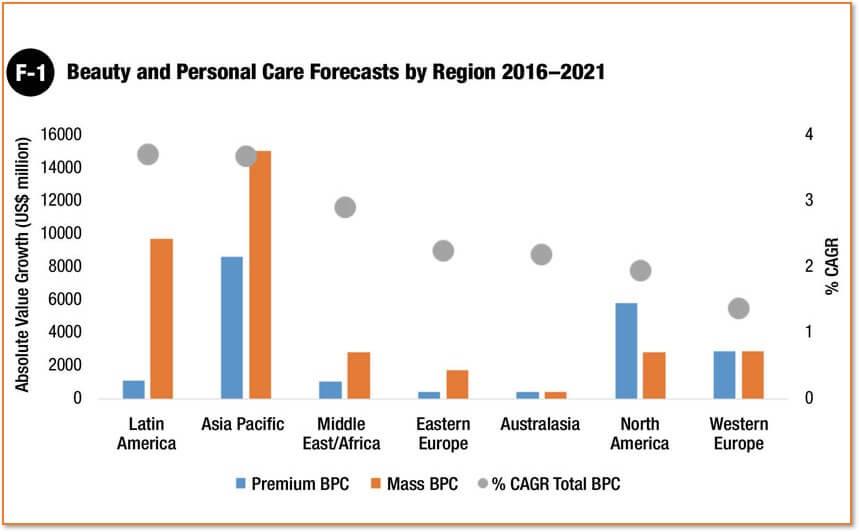It’s a Premium-Powered Future in Beauty and Personal Care
We’ve looked at some of the factors driving global growth in cosmetic, beauty and perosnal care products before. New research into how these segments shaped up in 2016 just confirms it: while there was respectable 5% growth across the entire sector, there was also strong evidence that premium and personalized products are the driving force behind much of that increase, according to Euromonitor. Some of their findings?
- Generation X and Y make up the biggest share of the premium segment, where they’re demonstrating an affinity for more extensive beauty routines, have much more digital engagement, express greater demands for results, and have a strong attraction to natural ingredients and ethically sourced and produced hair, skin and cosmetics brands.
- They’re more likely to spend more for green beauty, with 60% of green buyers willing to pay a premium for those brands.
- As Euromonitor points out, “‘all natural’ product claims matter to 50% or more of green-minded buyers in all markets, while other green features, like water efficiency, 100% organic, or botanically-derived ingredients, exhibit regional appeal even to buyers who prioritize green product features.'”
“Consumers are reassessing their values and priorities and are increasingly focusing on experience over ownership.” – Euromonitor
Between 2016-2021, Euromonitor anticipates a compound annual growth rate in premium products (CAGR) of 3.6%, compared to 2.4% in the mass segment. The U.S. and China will contribute 54% of the $20.3 billion in absolute gains in premium beauty, with China expected to eventually catch up with the United States.

Source: Euromonitor
But the U.S. is still flying its flag the highest among nations when it comes to per capita expenditures on BPC products, projected to top $90 by 2021. In our region, premium products will see gains of $5.8 billion during 2015-2021, a figure that’s double the prospects for mass beauty products.
Other growing markets? Brazil and Russia have staged a comeback, with a better economic situation in Brazil helping the upturn (with 4.8% growth), while Russia was boosted by more spending at local “high street” retail and the growth of local brands such as Faberlic and Natura Siberica (good for a 9.8% gain).
India and Indonesia nearly doubled in size as BPC markets between 2011 and 2016. Last year, they grew 9.2% and 10.6% respectively, trends that show no sign of letting up.
Growth may be propelling personalization

Their willingness to pay for these advances, in turn, supports development and marketing of products that eventually trickle down to less-affluent consumers, meaning that greater product personalization for each individual consumer may become far more prevalent – and will be viewed by those users as an expectation, not a luxury.
